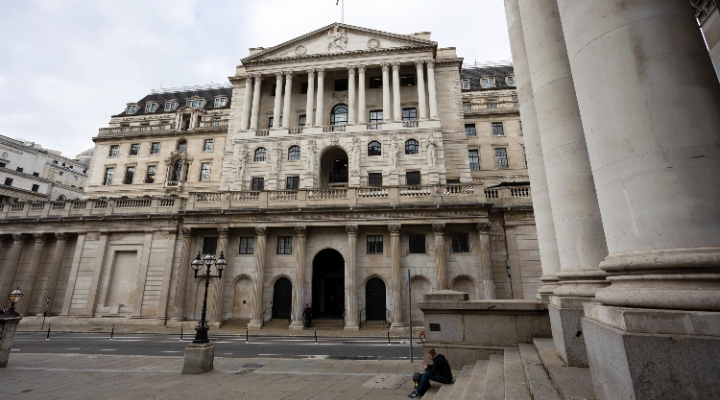
Updated UK inflation figures are due on Wednesday March 20 and the forecast is for an annual rise of 3.6% (year-on-year) for the Consumer Price Index (CPI), down from the 4% recorded in January. On Thursday, the Bank of England announces its decision on UK interest rates
It's an important week for inflation in the UK.
For one, the fresh CPI data due Wednesday will be the first since the Spring Budget, where chancellor Jeremy Hunt made the bold forecast that inflation would reach the 2% target in 2024, a year ahead of the Bank of England's own forecasts.
But the BoE itself has its own monetary policy meeting this week, and is expected to hold interest rates at 5.25%. Those wanting an early rate cut will probably be disappointed.
UK Inflation: is it Falling?
In terms of energy costs, February was relatively mild (but incredibly wet), meaning demand for gas will have been moderate. Lighter evenings will have curbed domestic electricity demand too. Consumers will be looking ahead to spring and summer when bills are usually lower. From April 1 to June 30, an energy price cap from regulator Ofgem will kick in. At £1,690 a year, this is lower than the £1,928 in the previous three month period.
The price of food and drink is still rising though, clocking in a gain of 7% on the year in January, according to the ONS.
Are tax cuts inflationary too? Academic theory would suggest they are, as lower taxes theoretically give consumers more spending power at the till and drive up prices.
But in the context of the UK economy in early 2024, people may use extra money to pay off debts such as credit card bills or energy bill deficits. With some savings rates around 5% and a new ISA year approaching, the more fortunate may save any tax cuts
National Insurance contributions were cut in January and will be cut again in April. The Bank of England will no doubt give its own view of this policy in its latest meeting – though you may have to read between the lines.
The Bank itself surveyed people recently about their inflation expectations in the next 12 months and the consensus is for CPI to be around 3%; this is the lowest expected rate since August 2021. The survey is conducted quarterly.
Has The UK Exited Recession Yet?
Along with the rate decision, policymakers will tell us where they think inflation will go this year and next – along with other commentary on economic growth and the labour market.
While we won't get the full monetary policy report, the summary accompanying the decision will be watched closely because it's first official statement from the Bank since February 1.
Since then we've had a number of datasets, including a surprise return to economic growth in January 2024, following the recession at the end of 2023.
What investors will be keen to see is any change in the Bank's inflation forecasts – in February, the Bank governor Andrew Bailey said inflation would fall but then rise again towards the end of the year, delaying the return to the target until possibly 2026.
Again, Treasury forecasts (via the OBR) and the Bank itself don't need to tally but one will likely be wrong. In an election year, the ruling party will certainly want to claim it has "defeated inflation" as it heads to the polls, even though most factors are out of its control.
June is a Key Month for Rate Decisions
The central banks' battle against inflation in the US, eurozone and UK has not yet been won; in the US there was a recent uptick in inflation, particularly core inflation, which has changed the expected timetable for the first rate cut. Markets now expect a US rate cut in June.
In the eurozone, inflation fell from 2.8% to 2.6% in February, but again the European Central Bank's governing council is making no forecasts for the first cut. June is expected to be the month when eurozone interest rates start to fall, teeing up the prospect of an ECB and Federal Reserve cut in the same month – just don't call it a "co-ordinated move". The Bank of England also meets on June 20, so a "triple rate cut" could be on the cards.
In the UK, it's fair to say inflation is moderating, but central banks policymakers will remain cautious with their rhetoric until CPI is back at the 2% target.
CPI hit 11.1% in October 2022 and has fallen sharply since – a period known as disinflation, a moderation in price rises. Deflation is when prices actually fall. Prices for many goods and services are still higher than at the outbreak of the pandemic four years ago. While wage growth has helped those in work, the UK economy is still in the midst of stagflation.
February's Inflation Forecast
On February 1, Bank of England governor Andrew Bailey made a surprise prediction in the press conference following the monetary policy report: that inflation this year would start to fall back towards target in the spring.
That's good news for those wanting rate cuts. But it will then start to rise again towards the end of the year to 2.75%. The bad news for homeowners yearning for a return to ultra-cheap mortgages? Inflation won't hit target until 2026. You may recall this target has already been shifted to 2025 from 2024.
The Bank blamed energy prices, which are driven by global trends, and domestic factors.
"CPI is projected to fall temporarily to the 2% target in Q2 2024 before increasing again in Q3 and Q4," it said.
"This profile of inflation over the second half of the year is accounted for by developments in the direct energy price contribution to 12-month inflation, which becomes less negative.
"This reflects the persistence of domestic inflationary pressures, despite an increasing degree of slack in the economy. CPI inflation is projected to be 2.3% in two years' time and 1.9% in three years."
What's Driving UK Inflation?
The charts below give an idea of the various components of the CPI basket and how they have changed.
Article written by James Gard, with charts by Sunniva Kolostyak




























